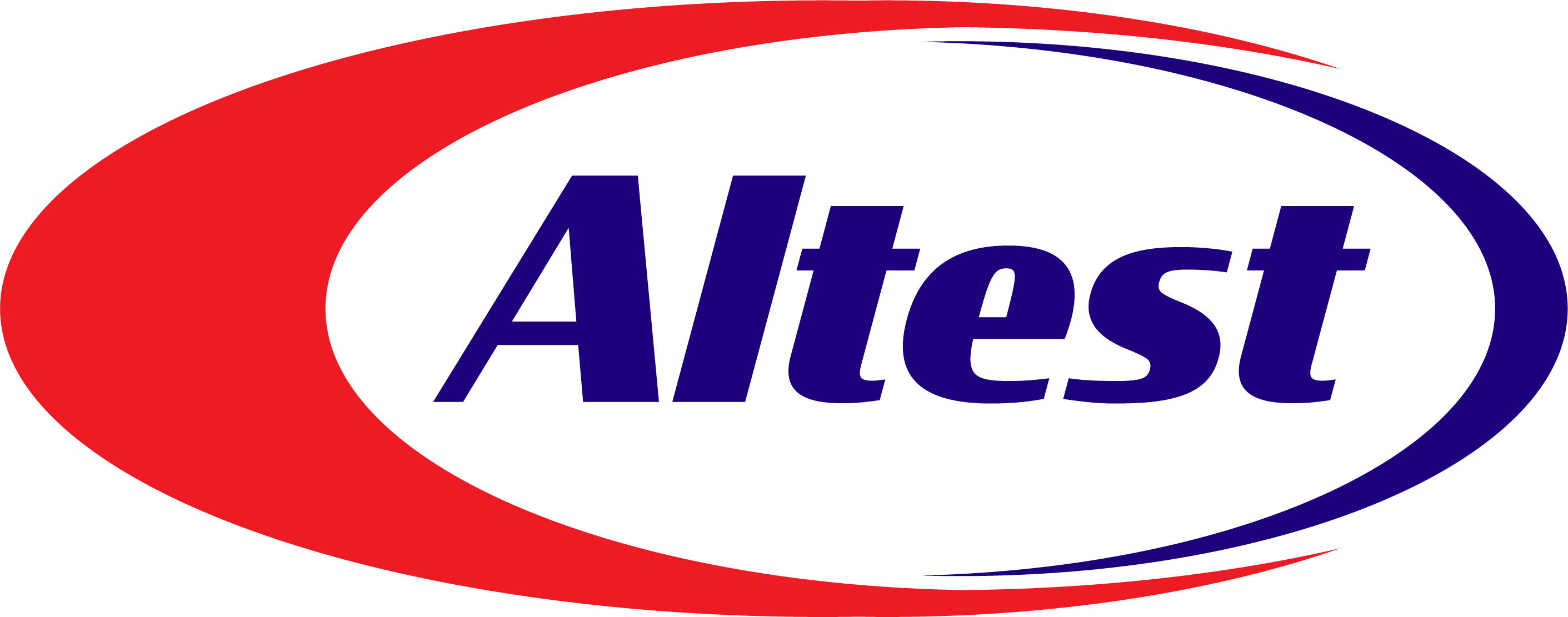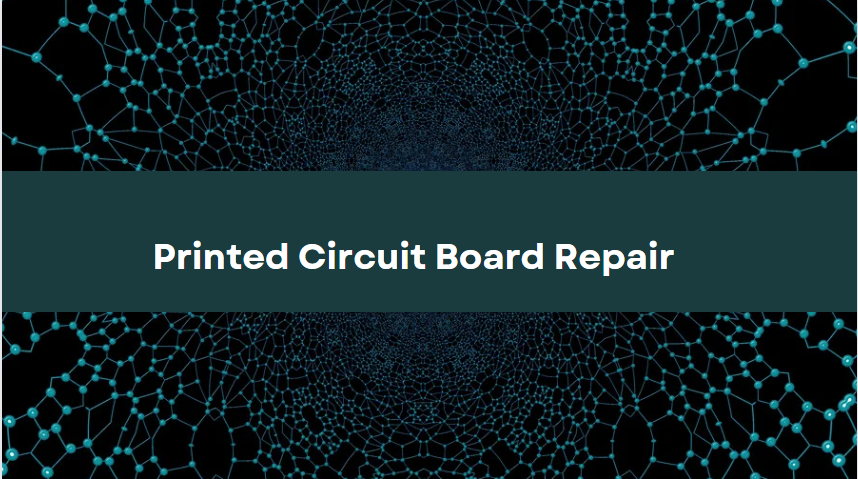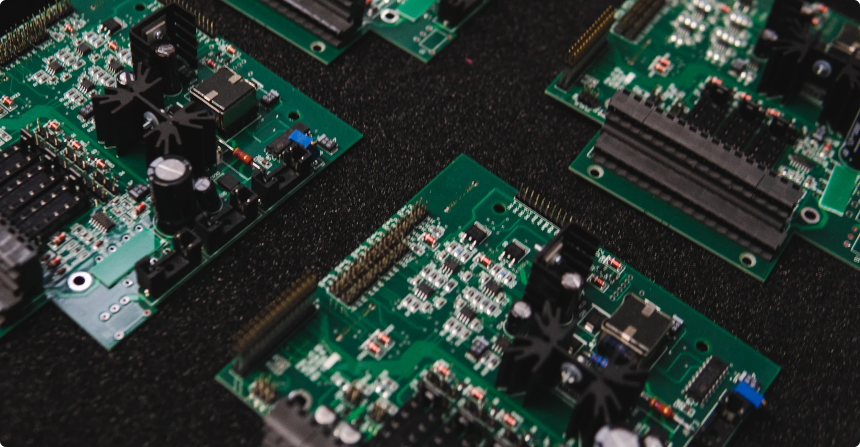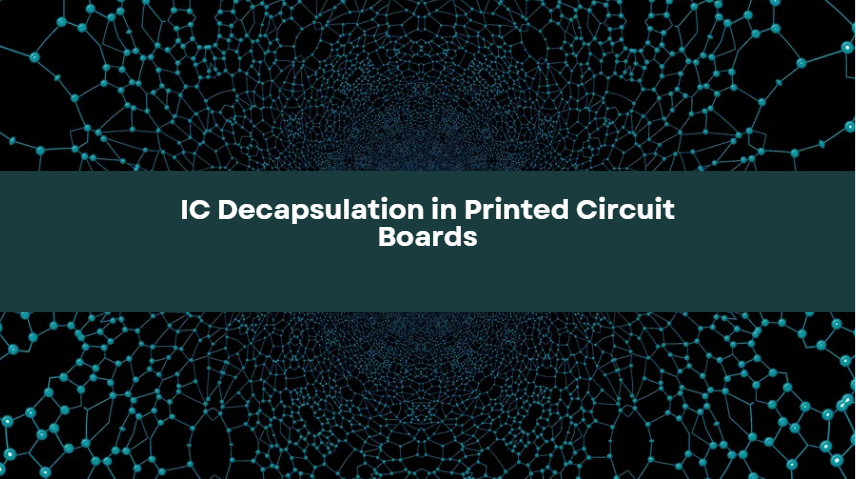Unlocking Efficiency with IC Decapsulation in Printed Circuit Boards
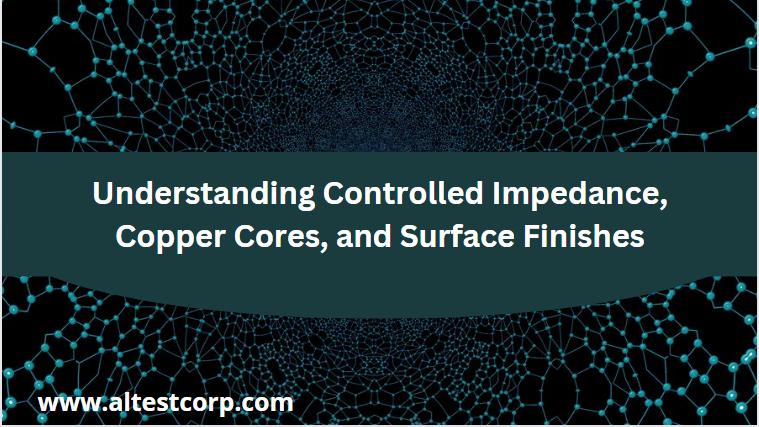
Admin, March 01,2024
Demystifying PCB Manufacturing: Understanding Controlled Impedance, Copper Cores, and Surface Finishes
Optimizing Flexibility and Durability
PCB manufacturing involves multiple steps that an expert manufacturer knows well. Various factors affect the function of a printed circuit board, such as impedance, substrates, and finishing materials. Here, we will discuss controlled impedance, copper core and flex PCB and compare different finishes, including ENIG, HASL, ENEPIG, etc.
PCB Impedance
An interaction between resistance and reactance in a PCB is known as impedance. It is PCB trace’s opposition to AC (alternating current). Engineers show impedance as ohms( frequency symbol).
The signal transmission becomes ideal if the impedance of the signal passing through a component is similar to another impedance. However, both ends having different impedances can result in poor signals. According to engineers, you need a controlled impedance in transmission lines, single-ended and embedded micro strips, and differential pairs’ strap lines.
Finding PCB Impedance
Generally, impedance in a trace ranges from 25 to 125 ohms. However, it depends on certain factors. Let’s look at these factors in terms of a rigid and a flex PCB;
Determining Impedance In a Rigid PCB
The following factors in a rigid PCB determine its impedance,
- Signal routes
- Copper trace width and thickness
- Core material thickness
- Core material dielectric constant
- Solder resists if any
- Distance from different features of copper
Remember that the type of the trace directly affects the value of the target impedance.
Determining Impedance In a Flex PCB
The following factors in the flex cut PCB determine its impedance,
- Hatch pitch and width
- Width and spacing of traces
- Polyimide DK value
- Adhesive DK value
- FCCL’s PL thickness
Flex PCB Connector
Mini devices call for many challenges in the PCB industry, and the flex PCB connector is a way to deal with such challenges. Advanced circuit boards involve smaller pitch distances, a minimum profile height, and compact interconnect systems, and a flex PCB connector helps them in this case. It is an alternative to a cable connector and goes well with a tight space.
Why Is Impedance Management Important?
Impedance control helps manage signal strength like in high-frequency boards. You have to measure the impedance of PCB traces to ensure their strengths. Since advanced devices come up with different frequencies, impedance control has become a regular process in PCB manufacturing. Manufacturers focus on controlled impedance while developing certain products, such as;
- Motor-based devices
- Laptops, PCs, Tablets, mobile phones
- GPS devices
- Internet and TV boxes
- Digital cameras
- Telecom as analog and digital
- Video signals’ processing
Different products depend on certain impedances for their function, hence you have to control it. There should be the same impedance in the entire PCB in a high-frequency device as it helps manage signal strength, keeping the data intact. Uncontrolled impedance can result in a poor circuit.
You must measure the impedance of all traces before finalizing the PCB design. Calculating the uncontrolled impedance during components’ assembly is quite hard. PCB components are different in terms of their tolerances, so you cannot calculate the impedance while assembling them. Besides, any change in the temperature can affect a component’s specification leading to a poor product. Both the PCB manufacturer and designer should work together, in this case.
How To Measure the Impedance Control
There are certain methods of calculating the impedance. Some popular methods give accurate results and are more reliable, as described below.
Calculating Impedance Through a Smith Chart: The method of the Smith chart is in the industry before the evaluation of PCB design software. PCB designers use
this chart to find the link between load impedance and the source. It involves graphics and a series of calculations that help find the impedance value of a specific trace in the PCB.
Calculating on Computer: Certain software helps to calculate the impedance. The software can convert the PCB design parameters into a simulation. Such a method helps designers virtually check a finished product. However, such software is often expensive and not all designers can afford it.
Calculating PCB Impedance Online: Many companies offer calculators on their websites to calculate the impedance. These online calculators help us to find PCB traces’ controlled impedance. this method is not as reliable as a simulation but, it provides a fast way to keep the process going, besides, you can have slight tweaks later on.
It gives you a safe way to design a PCB with controlled impedance rather than designing it blindly. You can use any of the above techniques for impedance calculation. However, you should consider your requirements and budget.
Effect Of Impedance On Signals
The quality of the signals in a circuit board gets affected by impedance in different ways, such as:
- Any difference in the impedance can result in crosstalks due to coupling signals.
- Incompatible impedance can reflect signals by sending them back to the driver, resulting in an overshoot or undershoot.
- Resonance can occur due to a poor source or load terminations.
- Incompatible impedance can reduce the edge rates, affecting the timing margins.
- Jitter or phase noises may happen due to mismatched impedances.
- Signal distortion happens due to a low or high impedance.
- The difference in impedance can affect the power integrity, creating noise.
So, a controlled impedance is necessary for signal integrity, such as in different GBPS materials.
PCB Finishing Materials
ENEPIG
ENEPIG is an abbreviation of electroless nickel electroless palladium immersion gold. It is a PCB finish or a metallic layer on the pads. As the name shows, ENEPIG provides a finish in three layers, including gold, nickel, and palladium.
First of all, nickel electroless immersion occurs, like copper pads get a nickel bath. Then, nickel gets a palladium coating. In the end, palladium gets gold plating by a replacement reaction caused by the gold-salt immersion or bath.
Positive Aspects of ENEPIG
- It reduces a black pad that occurs in the ENIG process.
- It can have deep vias and is compatible with smart PCBs.
- It provides high-end solderability, and the solder reflow is also high.
- ENEPIG works well with wire bonding
Negative Aspects of ENEPIG
- It is expensive than ENIG, hence it is not feasible for all projects.
- The solder efficiency is low due to a thick layer of palladium.
- Wetting takes time.
Understanding ENIG
ENIG is an abbreviation of electroless nickel immersion gold. As the name shows there are two finishing layers, including nickel and gold. First, you immerse copper pads in nickel and then in gold salt with the help of a replacement reaction. PCB manufacturers apply ENIG on selective pads, and the rest of the pads can be finished with HASL, OSP, immersion tin, etc.
Positive Aspects of ENIG
- It has great wear resistance.
- It provides a smooth finish for a ball-grid array or in tiny components.
- It is ideal for electrical inspection points in the PCB.
- It is compatible with a wire bonding and an edge-card connector.
- ENIG is a cost-effective finish.
Negative Aspects of ENIG
- Black pads may occur during the process of ENIG due to irregular nickel and gold processes.
- PCB finish can be affected due to the thickness of gold and nickel.
ENIG has a low wet factor.
ENEPIG Vs ENIG
When it comes to ENEPIG Vs ENIG, you will see that ENIG is ideal for low-end products. ENEPIG is better in solderability and wire bonding than ENIG, besides ENIG is selective but ENEPIG is non-selective. Since ENEPIG is expensive due to gold and palladium, so ENIG is a better option for low-budget and selective projects.
Note: The thickness of the layers varies in both ENIG and ENEPIG.
Copper Core in PCB
Early PCBs used to be of paper and resin, but later on, more compact PCBs evolved due to compact devices. Traditional boards were without any insulation which is now common in the form of copper PCB. Designers introduced copper to create boards with more thermal conductivity.
Many electronic devices emit heat, hence a copper core PCB becomes a thermal conductor, sending the heat somewhere else. Copper protects the sensitive parts of the board from getting overheated.
Another quality of copper is that it enhances a board’s mechanical strength. Such a quality protects a device facing any physical stress. Copper adds life to the board, making it long-lasting.
A copper core PCB is a combination of copper, insulation, and copper substrate. It is also known as a copper-based circuit board, or a copper-clad, or a copper- substrate printed circuit board. It is ideal for the LED industry and it consists of four types, such as:
- Copper core PCB with a normal stack.
- Chip-on-board copper circuit board
- Aluminum-copper PCB
- Copper-core board with a direct thermal route
ENIG Vs HASL
Both ENIG and HASL are PCB finishes.
HASL (hot air solder leveling) is a surface finish for circuit boards. In this process, the manufacturer puts a PCB in a hot bath of solder and levels it with hot air. Whereas in ENIG, a layer of electroless nickel and gold is applied to the board surface.
HASL is cost-effective, easy to work with, and it is always available. However, it is thicker compared to ENIG, so you cannot use it for SMD components.
On the other hand, ENIG is ideal for intense environments and is more reliable. It is ideal for military, aerospace, medical, and marine industries. However, ENIG is costly compared to HASL.
YOU MIGHT ALSO LIKE
Share:
